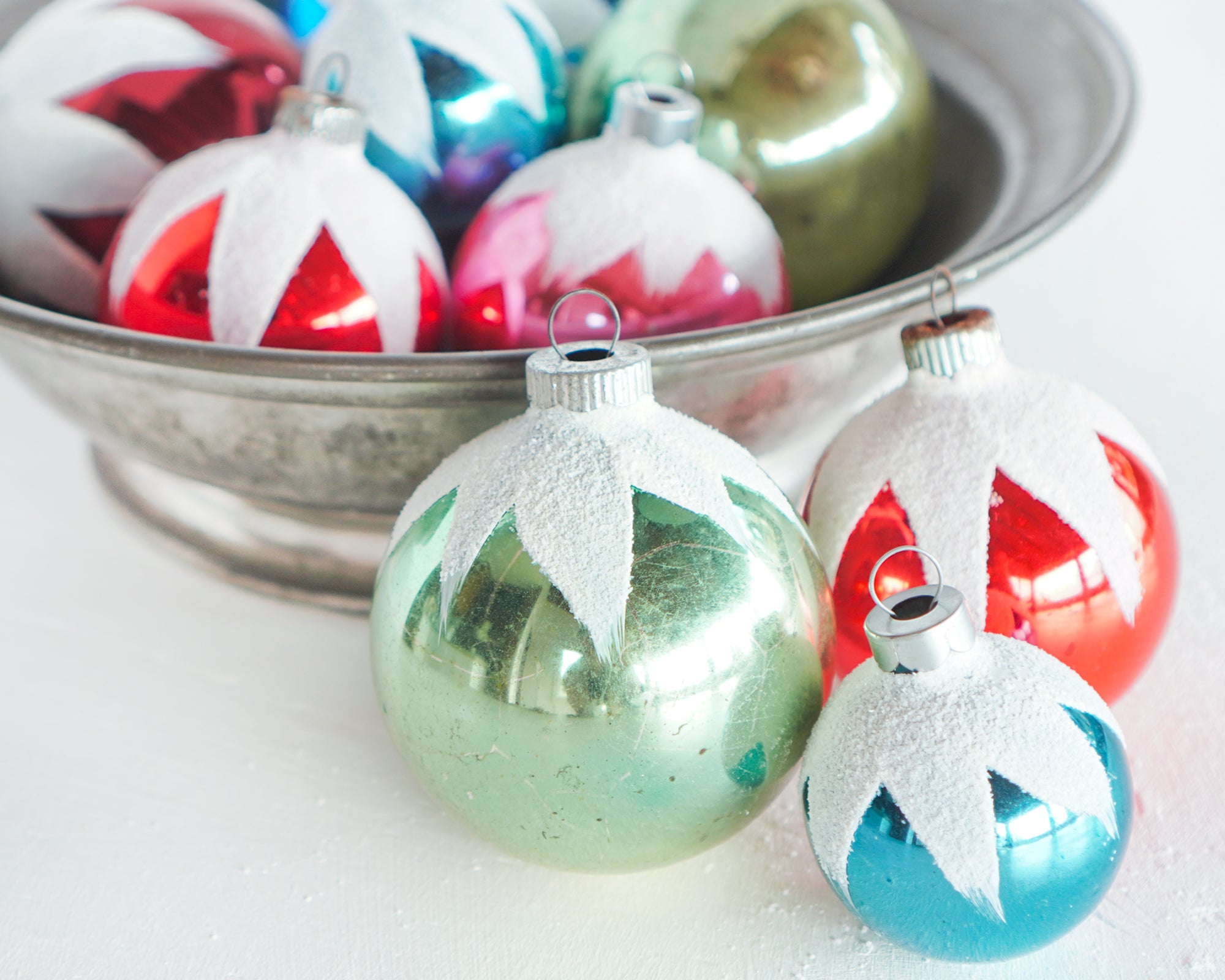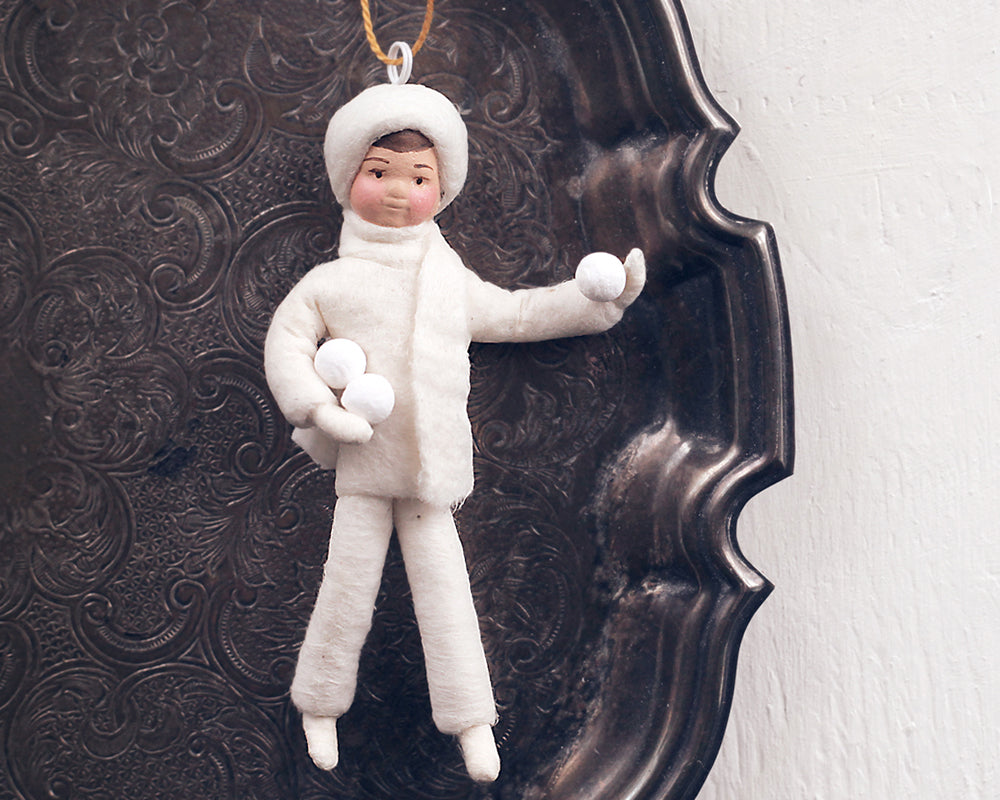No Bake Gingerbread House: Make a Graham Cracker A-Frame Cabin!
 If you're not keen on baking a whole batch of cookies, and just want to skip to the gingerbread house decorating, you can make the house out of graham crackers! Here I'll share how to make this cozy rustic A-frame cabin, step-by-step. This graham cracker gingerbread house would be a very fun Christmas party project for a group. The cabins are built on little plates, so your guests could easily take theirs home without much extra fuss. I am using these plastic squeeze bottles for the icing, which I find to be clean and easy compared to pastry bags, especially for kids, or folks who don't do a lot of cookie decorating. I had a few, and cut the tips off at different spots to make thinner and wider icing lines. Keep the icing bottle tip-down in a mug, and it will always be ready-to-use without air bubbles.
If you're not keen on baking a whole batch of cookies, and just want to skip to the gingerbread house decorating, you can make the house out of graham crackers! Here I'll share how to make this cozy rustic A-frame cabin, step-by-step. This graham cracker gingerbread house would be a very fun Christmas party project for a group. The cabins are built on little plates, so your guests could easily take theirs home without much extra fuss. I am using these plastic squeeze bottles for the icing, which I find to be clean and easy compared to pastry bags, especially for kids, or folks who don't do a lot of cookie decorating. I had a few, and cut the tips off at different spots to make thinner and wider icing lines. Keep the icing bottle tip-down in a mug, and it will always be ready-to-use without air bubbles.
As affiliates we earn from qualifying purchases.
Supplies:
- Graham crackers, approximately 7 per house, get extras for breakage
- Wax paper
- Serrated steak knife, cutting board
- Gel food coloring
- Paint brush
- Powdered sugar
- Pasteurized eggs
- Squeeze bottles
- Mug
- Party plates
- Wafer cookies
- Fresh rosemary for trees
- Toothpicks / skewers
How to cut graham crackers:
Use a small, serrated knife. A steak knife works great. Saw back and forth, and do not use any downward pressure. Continuous sawing, slow and steady, will cut through the cracker and leave a crisp edge. Try a few pieces first to get a feel for it. The dot pattern on the cracker will serve as a guide, and you can connect the dots to cut straight lines.
Step 1:
Make the roof panels: Cut the ends off of two crackers, cutting along the second to last row of dots. Discard the end bits.
Squeeze out a dime-sized amount of gel food coloring onto a plate. Use a paintbrush to mix in a few drops of water to thin the food coloring. It becomes almost like watercolor paint. Set the cracker on a sheet of wax paper and brush the color over the two roof panels. Use the paintbrush to fill in the little dots to cover just the surface without saturating the cracker. It should dry in about a half hour while you build the rest of the cabin.
Step 2:
Make the front panels of the cabin: Start by cutting 1/4 off of the length of two crackers. Then, cut each along the diagonal to make two mirror-image triangles. It's okay if the points crumble a little- you won't see this detail once the cabin is assembled.
Cut off the points on the outer edges of the triangles.
Once you have a pair of shapes to be the front of the cabin cut two more identical shapes to make the back of the cabin.
Step 3:
Cut two small rectangles to make the side walls.
Step 4:
Mix icing: You will want a fairly stiff icing for construction, mixed just thin enough to squeeze out of the bottle tips. Most royal icing recipes will work fine if you want to find one that does not use eggs. I have also made these with just powdered sugar mixed with water which works decently well, and is just not as solid once dry.
The recipe I used is 1 1/3 cup powdered sugar with the whites of one pasteurized egg. This ratio fills a 4 ounce squeeze bottle about halfway, so multiply for the amount you need for your group. Mix well, by hand or by mixer, for a few minutes until stiff, but still pourable. If your consistency does not look right to you, adjust by either adding more sugar, or adding water one single drop at a time to thin.
Step 5:
Connect the front and back panel pieces:
Squeeze icing along the center edges to connect the panels for the front and back panels. Wipe off the excess to maintain a smooth surface for decorating later. Whichever side is facing up will be the outside of your cabin walls. I am using the backs of the cracker for my walls, so I have the dotted side facing down. Set them on wax paper to dry for about 20 minutes.
Step 6:
Assemble the cabin: Squeeze a generous line of icing near the back of a party plate. Pick up the back panel, and squeeze icing on the insides of each side. Set it onto the plate and hold in place. While holding the back of the cabin with one hand, squeeze two more lines of icing on the plate for the side walls. Stick the side walls down and against the back panel. Hold in place for a minute until these three pieces stand up on their own.
Apply one last line of icing to the plate for the front of the cabin. Pick up the front cabin panel, apply two lines of icing to the inside edge of each side, and press into place, meeting the side walls. Gently hold all the pieces together for a couple minutes until the structure is sound, then leave to dry for about 15 minutes before adding the roof.
Step 7:
Apply icing to the top edges of the front and back panels. Apply both roof panels at once, having them meet in the middle. It's okay if there is a gap at the top- it will be filled with icing later. Focus more on forming a seal between the roof panels and the front and back pieces. Hold in place until there is no sliding or shifting of the roof.
Cut two small triangles to fit up in the peak area of the roof at the front and back of the cabin. These shapes will vary a little from house to house depending on how the angle of the roof ended up, so cut each to fit as well as possible. Apply icing to the top edges of the triangles and the backs, and press into the gable. These shapes will stabilize the roof and keep everything solid.
Let the cabin dry for a bit before decorating to give the icing a chance to set up.
Step 8:
You can decorate these cabins with icing or candies like a traditional gingerbread house. I am splitting vanilla wafer cookies to make thin sheets for doors and windows. They can be cut the same way as the crackers, with a sawing motion, and can be tinted with gel food coloring as well.
Apply icing to the rooftop, and use a skewer to pull it down into icicle forms. The remaining icing can be poured out into the plate to make a snow blanket. Create a woodland environment with rosemary sprigs upturned to look like trees.



